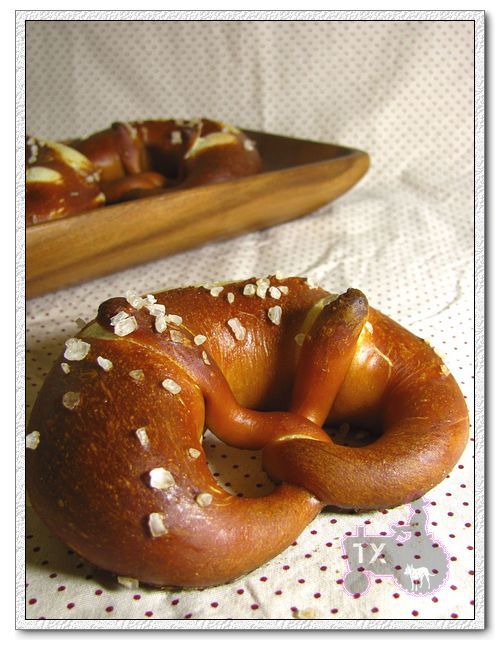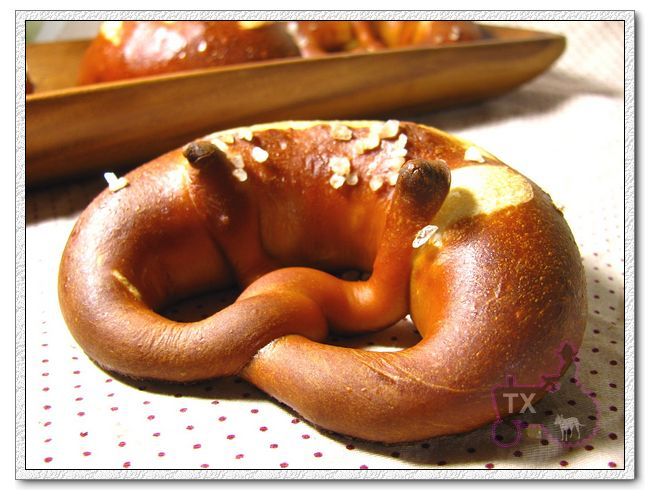
I posted a few days ago asking why my lye pretzels are not dark enough, after much reading and some experimenting, I think I figured out why. After I mixed up the lye solution, I didn't let it sit and completely dissolve, so the solution was too weak. The first time, I mixed and dipped the dough right away. This time, I mixed up a 3.5% lye solution (between 3% and 4% is good, the higher the darker, but don't go beyond 4%) with room temperature water, let the solution sit at a safe place for 15 minutes, slowly stir for the first few minutes. The solution heated up at first, then started to become clear and cooled down. After that, dip the dough for 30sec each, bingo, this time I got the color and shine I want. The devil is in the details huh?!
Also made some other shapes, I think they look cute with wide open scoring marks.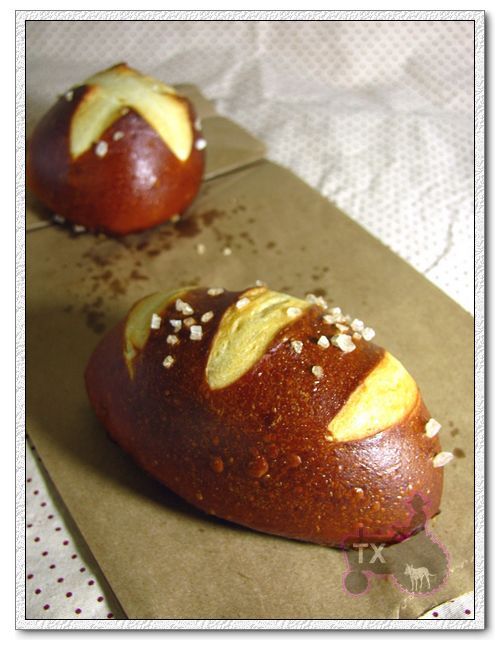
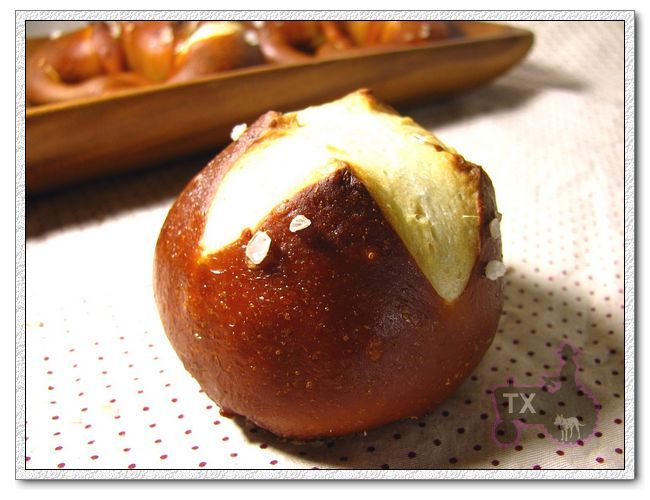
The recipe is from Jeffrey Hamelman's Bread, I did make one change: after reading a suggestion on the web, I used milk instead of water in the formula, I do think it tastes more authentic that way. I loved how the pretzels tasted and looked when I stayed at Germany a few years ago, crispy and hard shell, soft and chewy crumb, and a special "lye pretzel" taste. It's decidely different from American style soft pretzels boiled in baking soda solution (which I also like), good to split open and make a sandwich with. I do need to work on my shaping techniques to get rid of the unsightly holes in the crumb.
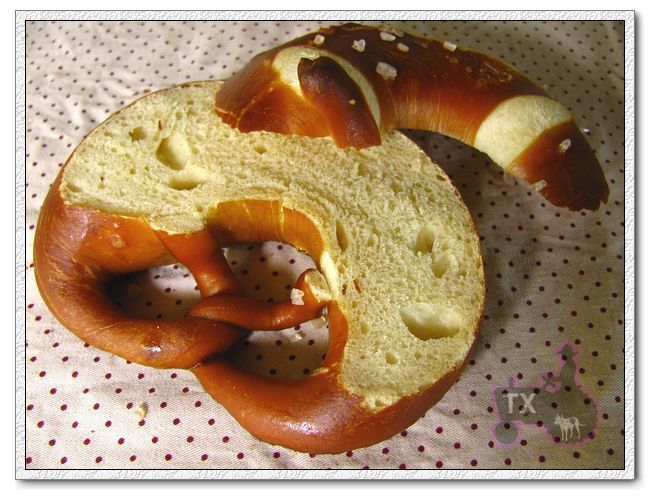
I have a whole lot of lye left, will be practicing making pretzels for a while!
